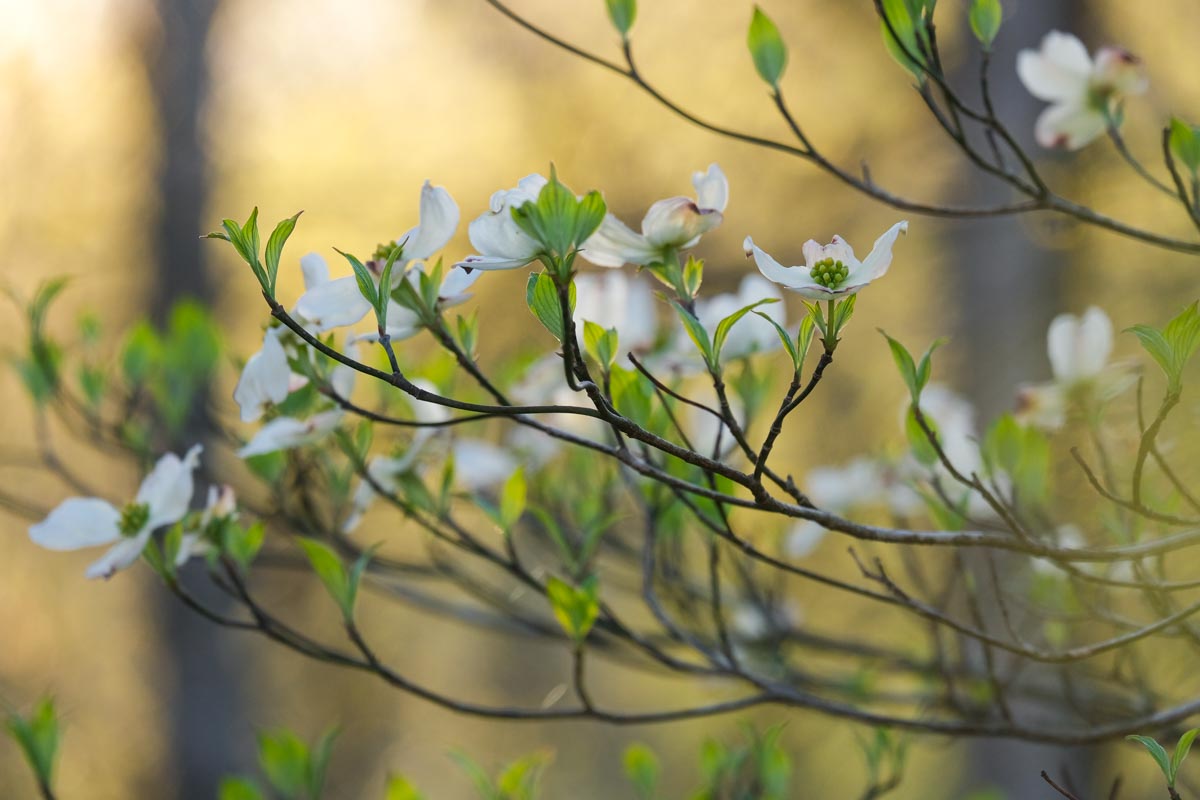When I was growing up in suburban New York, my dad seemed especially fond of dogwoods. Though we didn’t have any growing wild on our small lot, he added two of the white native trees and a pink cultivar. This dominated the view out my bedroom window, and their profusion of flowers in spring always made me feel the season had truly arrived.
It was 11 years ago this week when I first saw what has become my home, and I bought it a month later. Coming up the driveway, my first impression was the gorgeous full bloom of four dogwood trees. As I explored the woods surrounding the house, I was delighted to see even more dotting the forest with their beautiful bright blooms.
As in many parts of the south, some of these dogwood trees have succumbed to the dogwood anthracnose that first appeared suddenly in the U.S. The first trace of this fungus was discovered in Washington State in 1976, and within a couple years it was also noted in the northeast. From there it spread steadily south, arriving in Georgia and North Carolina in less than 10 years. Studies by the USDA suggest it has hit especially hard in the southern Appalachians, with forests above 3000 feet in elevation suffering the greatest loss. Most research suggests the fungus was introduced, but no one knows exactly how it arrived. Luckily trees at lower elevations seem to do better. I have lost one of my dogwoods along the driveway, but the others are still thriving. To avoid additional stress, I keep competing vegetation away from them, and water them where my hoses will reach in times of drought.
Locals also take these blooms as a warning. Here in Tennessee, there is a time in mid to late April known as dogwood winter, when some savvy farmers delay planting their crops to avoid the heavy frost that often occurs toward the end of the month. For the third week in a row this month, we will swing from the 80s to below freezing, and this week it is the dogwood flowers that are predicting this wild fluctuation. In Tennessee folklore there are many winters named for flora, and they have already predicted locust winter and redbud winter accurately this month. I’m just hoping that the next to come, blackberry winter, skips this year. In the meantime, I’m beginning to agree that plants really are the best meteorologists.
Every day a thousand trees unfurl new leaves, catching the sun and filling the earth with shadows. Woodland wildflowers have reached their crescendo, nearing the end of their race for light. As the forest floor grows dark, the short plants will finish their short seasons, in the narrow window between winter and the formal arrival of a frost-free spring. Dogwood flowers are said to symbolize rebirth, and resilience. Every spring, when their blossoms burst open it takes on a special meaning for me considering the threats to their survival. In this photo, a tree along my driveway glows in the soft sunset light. Its return is both a promise kept of persisting another year through challenges, and an assurance of longer, warmer days to come.
